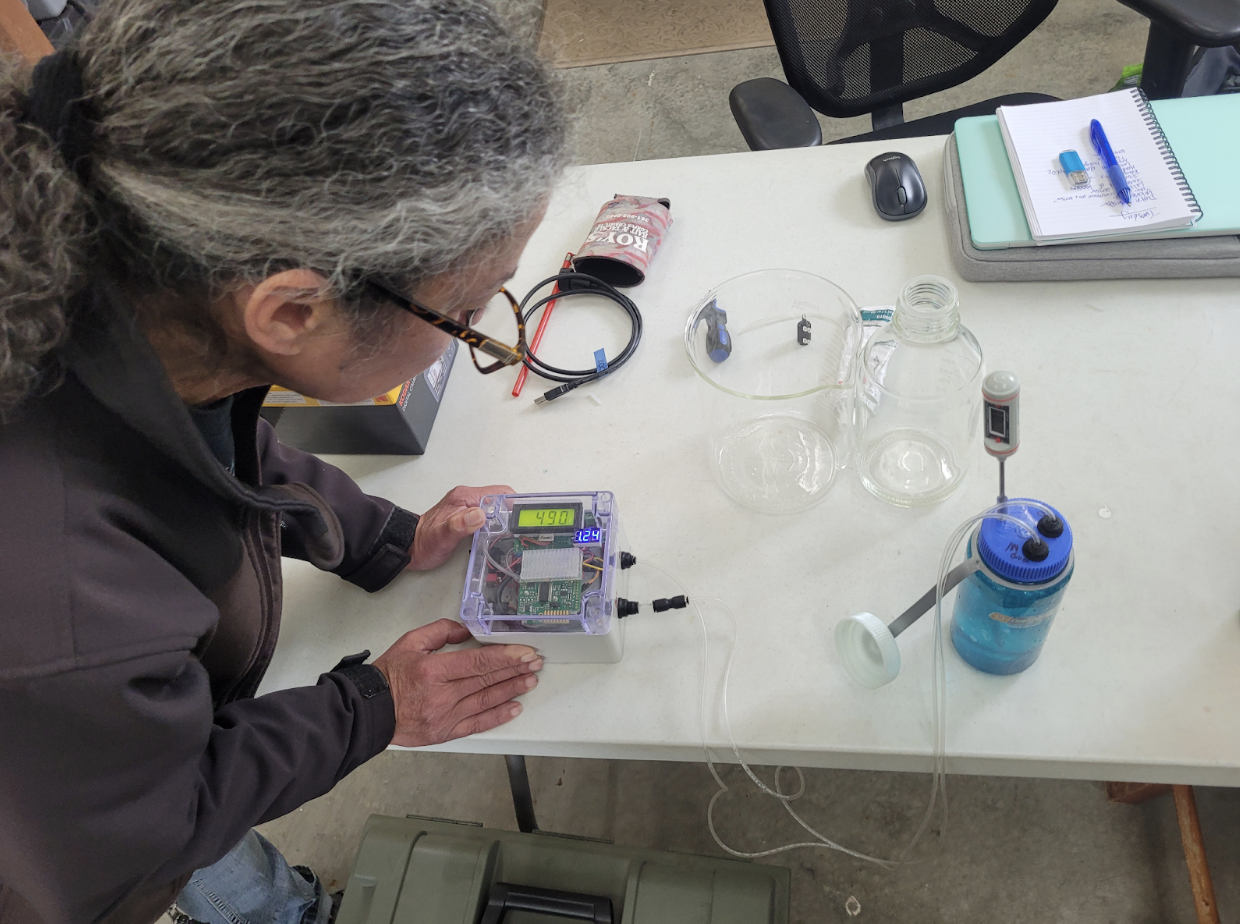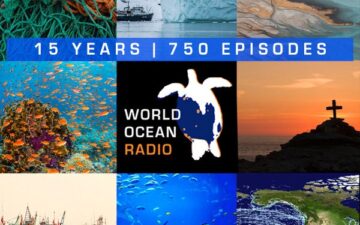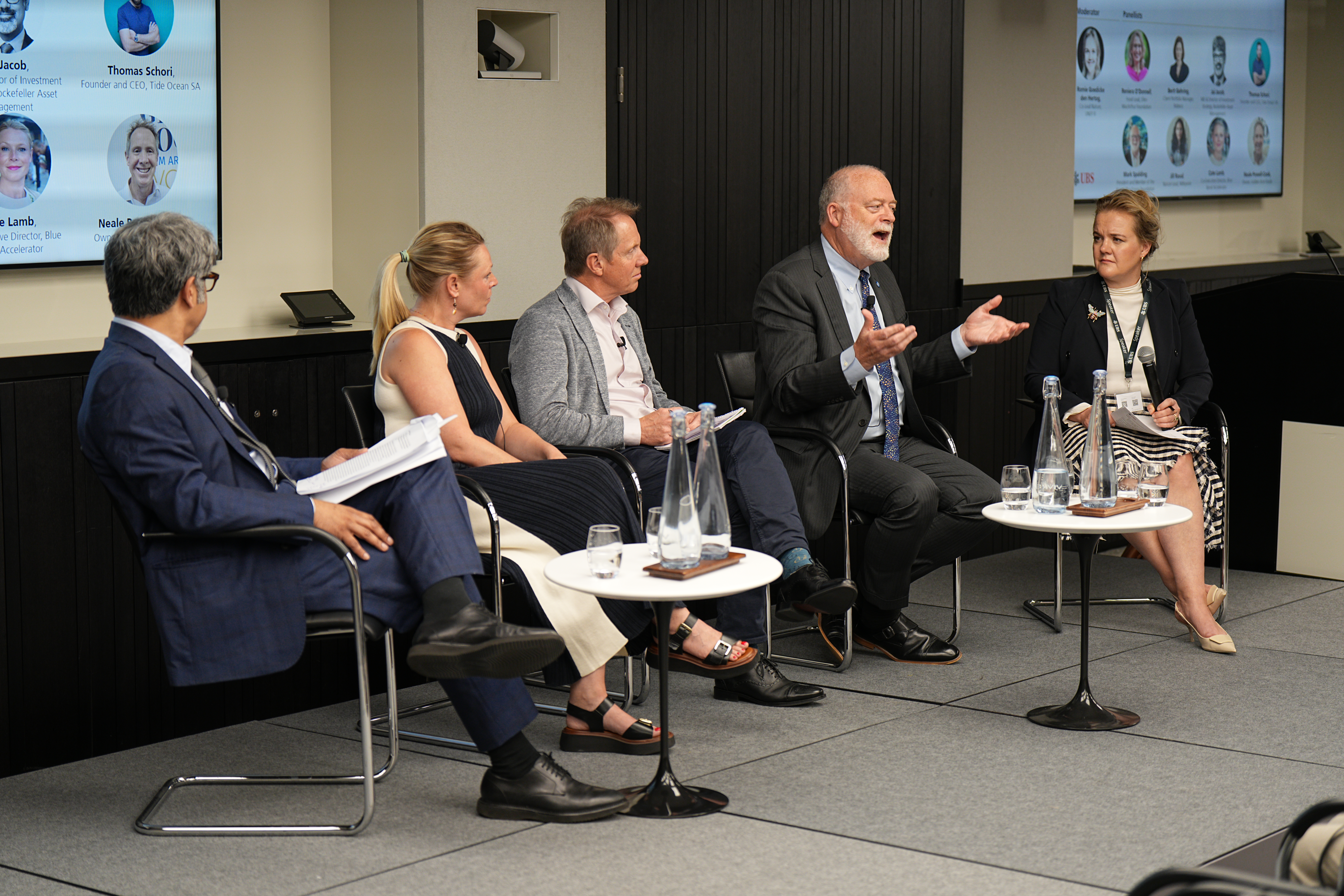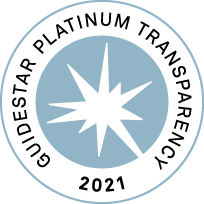BACK TO RESEARCH
Table of Contents
1. Introduction
2. The Basics of Ocean Acidification
3. The Effects of Ocean Acidification on Coastal Communities
4. Ocean Acidification and Its Potential Effects on Marine Ecosystems
5. Resources for Educators
6. Policy Guides and Government Publications
7. Additional Resources
We’re working to understand and respond to the changing chemistry of the ocean.
View our ocean acidification work.

1. Introduction
The ocean absorbs a significant portion of our carbon dioxide emissions, which is changing the chemistry of the ocean at an unprecedented rate. About one-third of all emissions in the past 200 years have been absorbed by the ocean, causing an average pH decrease of ocean surface waters by about 0.1 unit – from 8.2 to 8.1. This change has already caused short-term, local impacts on ocean flora and fauna. The ultimate, long-term consequences of an increasingly acidic ocean may be unknown, but the potential risks are high. Ocean acidification is a growing problem as anthropogenic carbon dioxide emissions continue to change the atmosphere and climate. It is estimated that by the end of the century, there will be an additional drop of 0.2–0.3 units.
What is Ocean Acidification?
The term ocean acidification is most commonly misconstrued due to its complex name. ‘Ocean acidification may be defined as the change in ocean chemistry driven by the oceanic uptake of chemical inputs to the atmosphere including carbon, nitrogen, and sulfur compounds.’ In simpler terms, this is when excess CO2 is dissolved into the ocean’s surface, changing the chemistry of the ocean. The most common cause of this is due to anthropogenic activities such as the burning of fossil fuels and land use change that emit a large amount of CO2. Reports such as the IPCC Special Report on Oceans and Cryosphere in a Changing Climate have shown that the ocean’s rate of uptaking atmospheric CO2 has increased in the last two decades. Currently, the atmospheric CO2 concentration is ~420ppmv, a level not seen for at least 65,000 years. This phenomenon is commonly referred to as ocean acidification, or “the other CO2 problem,” in addition to ocean warming. Global surface ocean pH has already decreased by more than 0.1 units since the Industrial Revolution, and the Intergovernmental Panel on Climate Change Special Report on Emissions Scenarios predicts future declines of 0.3 to 0.5 pH units globally by the year 2100, although the rate and extent of the decrease is variable by region.
The ocean as a whole will remain alkaline, with a pH above 7. So, why is it called ocean acidification? When CO2 reacts with seawater, it becomes carbonic acid, which is unstable. This molecule further reacts with seawater by releasing a H+ ion to become bicarbonate. When releasing the H+ ion, there becomes a surplus of it causing a reduction in pH. Therefore making the water more acidic.
What is the pH Scale?
The pH scale is the measurement of the concentration of free hydrogen ions in a solution. If there is a high concentration of hydrogen ions, the solution is considered acidic. If there is a low concentration of hydrogen ions relative to hydroxide ions, the solution is considered basic. When correlating these findings to a value, the measurement of pH is on a logarithmic scale (10-fold change) from 0-14. Anything below 7 is considered acidic, and above it is considered basic. As the pH scale is logarithmic, a unit decrease in pH is equal to a ten-fold increase in acidity. An example for us humans to understand this is comparing it to the pH of our blood, which on average is about 7.40. If our pH were to change, we would experience trouble breathing and begin to get really sick. This scenario is similar to what marine organisms experience with the increasing threat of ocean acidification.
How Does Ocean Acidification Affect Marine Life?
Ocean acidification can become detrimental to some calcifying marine organisms, such as mollusks, coccolithophores, foraminifera, and pteropods that create biogenic calcium carbonate. Calcite and aragonite are the major biogenically formed carbonate minerals produced by these marine calcifiers. The stability of these minerals are dependent on the amount of CO2 in the water and partially by temperature. As anthropogenic CO2 concentrations continue to rise, the stability of these biogenic minerals decreases. When there is an abundance of H+ ions in the water, one of the building blocks of calcium carbonate, carbonate ions (CO32-) will bind more easily with hydrogen ions rather than calcium ions. For calcifiers to produce calcium carbonate structures, they need to facilitate the binding of carbonate with calcium, which can be energetically costly. Thus, some organisms demonstrate a decrease in calcification rates and/or an increase in dissolution when exposed to future ocean acidification conditions (information from the University of Plymouth).
Even organisms that are not calcifiers can be affected by ocean acidification. Internal acid-base regulation that is needed to contend with changing external seawater chemistry can divert energy from basic processes, such as metabolism, reproduction, and typical environmental sensing. Biological studies continue to be organized to understand the full range of potential effects of changing ocean conditions on a breadth of marine species.
Yet, these effects may not be limited to individual species. When problems like this arise, the food web is immediately disrupted. While it may not seem like a big problem to us humans, we rely on these hard-shelled organisms to fuel our lives. If they are not forming or producing properly, a domino effect will occur to the entire food web, with the same instances happening. When scientists and researchers understand the detrimental effects that ocean acidification may have, countries, policymakers, and communities need to come together to limit its effects.
What is The Ocean Foundation Doing Regarding Ocean Acidification?
The Ocean Foundation’s International Ocean Acidification Initiative builds the capacity of scientists, policymakers, and communities to monitor, understand, and respond to OA both locally and collaboratively on a global scale. We do this by creating practical tools and resources that are designed to work all around the world. For more information on how The Ocean Foundation is working to address Ocean Acidification please visit the International Ocean Acidification Initiative website. We also recommend visiting The Ocean Foundation’s annual Ocean Acidification Day of Action webpage. The Ocean Foundation’s Ocean Acidification Guidebook for Policymakers is designed to provide already adopted examples of legislation and language to aid the drafting of new lawmaking to address ocean acidification, the Guidebook is available upon request.
2. Basic Resources on Ocean Acidification
Here at The Ocean Foundation, our International Ocean Acidification Initiative increases the capacity of scientists, policymakers, and communities to understand and research OA on a local and global scale. We are proud of our work to increase capacity through global trainings, long-term support with equipment, and stipends to support ongoing monitoring and research.
Our goal within the OA initiative is to have every country have a robust national OA monitoring and mitigation strategy driven by local experts and needs. While also coordinating regional and international action to provide the necessary governance and financial support needed to address this global challenge. Since the development of this initiative we have been able to accomplish:
- Deployed 17 kits of monitoring equipment in 16 countries
- Led 8 regional trainings with over 150 scientists in attendance from all over the world
- Published a comprehensive guidebook on ocean acidification legislation
- Developed a new kit of monitoring equipment that reduced the cost of monitoring by 90%
- Funded two coastal restoration projects to study how blue carbon, such as mangrove and seagrass, can mitigate ocean acidification locally
- Formed formal partnerships with national governments and intergovernmental agencies to help coordinate large-scale action
- Assisted with passing two regional resolutions through formal UN processes to stimulate momentum
These are just a few of the many highlights that our initiative has been able to accomplish in just the last few years. The OA research kits, called the “Global Ocean Acidification Observing Network in a Box,” have been a cornerstone of IOAI’s work. These projects establish often the first ocean chemistry monitoring in each country and allow researchers to add on research to study the effects of different marine species like fish and coral. These projects that have been supported by the GOA-ON in a Box kit have contributed to the research as some recipients earned a graduate degree or built out their own labs.
Ocean Acidification refers to the reduction of the pH of the ocean over an extended period of time, typically decades or longer. This is caused by the uptake of CO2 from the atmosphere, but can also be caused by other chemical additions or subtractions from the ocean. The most common cause of OA in today’s world is due to anthropogenic activities or in simpler terms, human activities. When CO2 reacts with seawater, it becomes a weak acid, generating a number of changes in chemistry. This increases bicarbonate ions [HCO3–] and dissolved inorganic carbon (Ct), and lowers pH.
What is pH? A measure of ocean acidity that can be reported using different scales: National Bureau of Standards (pHNBS), seawater(pHsws), and total (pHt) scales. The total scale (pHt) is recommended (Dickinson, 2007) and is the most commonly used.
Hurd, C., Lenton, A., Tilbrook, B. & Boyd, P. (2018). Current understanding and challenges for oceans in a higher-CO2 world. Nature. Retrieved from https://www.nature.com/articles/s41558-018-0211-0
Although ocean acidification is a global phenomenon, recognition of significant regional variability has led to the establishment of observation networks. Future challenges in a higher-CO2 world include better design and rigorous testing of adaptation, mitigation, and intervention options to offset the effects of ocean acidification.
National Caucus of Environmental Legislators. NCEL Fact Sheet: Ocean Acidification.
A fact sheet detailing key points, legislation, and other information regarding ocean acidification.
Amaratunga, C. 2015. What the devil is ocean acidification (OA) and why should we care? Marine Environmental Observation Prediction and Response Network (MEOPAR). Canada.
This guest editorial covers a convening of marine scientists and members of the aquaculture industry in Victoria, BC where leaders discussed the worrisome phenomenon of ocean acidification and its effects on Canada’s oceans and aquaculture.
Eisler, R. (2012). Ocean Acidification: A Comprehensive Overview. Enfield, NH: Science Publishers.
This book reviews the available literature and research on OA, including a historical overview of pH and atmospheric CO2 levels and natural and anthropogenic sources of CO2. The authority is a noted authority on chemical risk assessment, and the book summarizes real and projected effects of ocean acidification.
Gattuso, J.-P. & L. Hansson. Eds. (2012). Ocean Acidification. New York: Oxford University Press. ISBN- 978-0-19-959108-4
Ocean Acidification is a growing problem and this book helps contextualize the problem. This book is most relevant to academics as it is a research-level text and it synthesizes up-to-date research on the likely consequences of OA, with the goal of informing both future research priorities and marine management policy.
Gattuso, J.-P., J. Orr, S. Pantoja. H.-O. Portner, U. Riebesell, & T. Trull (Eds.). (2009). The ocean in a high-CO2 world II. Gottingen, Germany: Copernicus Publications. http://www.biogeosciences.net/ special_issue44.html
This special issue of Biogeosciences includes over 20 scientific articles on ocean chemistry and the impact of OA on marine ecosystems.
Turley, C. and K. Boot, 2011: The ocean acidification challenges facing science and society. In: Ocean Acidification [Gattuso, J.-P. and L. Hansson (eds.)]. Oxford University Press, Oxford, UK, pp. 249-271
Human development has progressed significantly in the past century with positive and negative effects on the environment. As the population continues to grow, humans have been continuously creating and inventing new technologies to continue to gain wealth. When the main goal is wealth, sometimes the effects of their actions are not taken into account. The over-exploitation of planetary resources and build-up of gasses has changed the atmospheric and oceanic chemistry having drastic effects. Because humans are so powerful, when the climate has been in danger, we have been quick to respond and reverse these damages creating good. Due to the potential risk of negative effects on the environment, international agreements and laws need to be made to keep the earth healthy. Political leaders and scientists need to come together to determine when it is deemed necessary to step in to reverse the effects of climate change.
Mathis, J. T., J. N. Cross, and N. R. Bates, 2011: Coupling primary production and terrestrial runoff to ocean acidification and carbonate mineral suppression in the eastern Bering Sea. Journal of Geophysical Research, 116, C02030, doi:10.1029/2010JC006453.
Looking at dissolved organic carbon (DIC) and total alkalinity, important concentrations of carbonate minerals and pH can be observed. Data has shown that calcite and aragonite have been significantly affected by river runoff, primary production, and the remineralization of organic matter. These important carbonate minerals were undersaturated within the water column from these events that stem from anthropogenic carbon dioxide in the oceans.
Gattuso, J.-P. Ocean Acidification. (2011) Villefranche-sur-mer Developmental Biological Laboratory.
A short three-page overview of ocean acidification, this article provides a basic background of the chemistry, pH scale, name, history, and impacts of ocean acidification.
Harrould-Kolieb, E., M. Hirshfield, & A. Brosius. (2009). Major Emitters Among Hardest Hit by Ocean Acidification. Oceana.
This analysis evaluates the likely vulnerability and impact of OA on different countries around the world based on the magnitude of their fish and shellfish catch, their level of seafood consumption, the percentage of coral reefs within their EEZ, and the projected level of OA in their coastal waters in 2050. The report notes that nations with large coral reef areas, or catch and consume large amounts of fish and shellfish, and those located at higher latitudes are most vulnerable to OA.
Doney, S. C., V. J. Fabry, R. A. Feely, and J. A. Kleypas, 2009: Ocean acidification: The other CO2 problem. Annual Review of Marine Science, 1, 169-192, doi:10.1146/annurev.marine.010908.163834.
As anthropogenic carbon dioxide emissions increase a shift in carbonate chemistry occurs. This alters the biogeochemical cycles of important chemical compounds like aragonite and calcite, decreasing proper reproduction of hard-shelled organisms. Lab tests have shown reduced calcification and growth rates.
Dickson, A.G., Sabine, C.L. and Christian, J.R. (Eds.) 2007. Guide to best practices for ocean CO2 measurements. PICES Special Publication 3, 191 pp.
Carbon dioxide measurements are foundational to the research of ocean acidification. One of the best guides for measuring was developed by a science team with the U.S. Department of Energy (DOE) for their project to conduct the first global survey of carbon dioxide in the oceans. Today the guide is maintained by the National Oceanic and Atmospheric Administration.
3. The Effects of Ocean Acidification on Coastal Communities
Ocean acidification affects the basic function of marine life and ecosystems. Current research shows that ocean acidification will have serious consequences for coastal communities that are dependent on coastal protection, fisheries, and aquaculture. As ocean acidification rises in the world’s oceans, there will be a shift in macroalgal dominance, habitat degradation, and loss of biodiversity. Communities in tropical and subtropical areas are at the most risk for significant decline in revenue from the ocean. Studies that examine the effects of ocean acidification on exposed fish populations show detrimental changes in olfactory, spawning behavior, and escape response (citations below). These changes will break the critical foundation for the local economy and ecosystem. If humans were to observe these changes firsthand, the attention to slow down current rates of CO2 emissions would significantly deviate from any of the scenarios explored above. It has been estimated that if these effects continue to have these effects on fish, there could be hundreds of millions of dollars lost annually by 2060.
Alongside fisheries, coral reef ecotourism brings in millions of dollars of revenue each year. Coastal communities rely and depend on coral reefs for their livelihoods. It has been estimated that as ocean acidification continues to rise, the effects on coral reefs will be stronger, therefore decreasing their health which will result in an estimated $870 billion lost annually by 2100. This alone is the effect of ocean acidification. If scientists add the combined effects of this, with warming, deoxygenation, and more, can result in even more detrimental effects to both the economy and ecosystem for coastal communities.
Moore, C. and Fuller J. (2022). Economic Impacts of Ocean Acidification: A Meta-Analysis. University of Chicago Press Journals. Marine Resource Economics Vol. 32, No. 2
This study shows an analysis of the effects of OA on the economy. The effects of fisheries, aquaculture, recreation, shoreline protection, and other economic indicators were reviewed to learn more about the long-term effects of ocean acidification. This study found a total of 20 studies as of 2021 that have analyzed the economic effects of ocean acidification, however, only 11 of which were robust enough to be reviewed as independent studies. Of these, the vast majority focused on mollusk markets. The authors conclude their study by calling out the need for more research, particularly studies that include specific emissions and socioeconomic scenarios, in order to get accurate predictions of the long-term effects of ocean acidification.
Hall-Spencer JM, Harvey BP. Ocean acidification impacts on coastal ecosystem services due to habitat degradation. Emerg Top Life Sci. 2019 May 10;3(2):197-206. doi: 10.1042/ETLS20180117. PMID: 33523154; PMCID: PMC7289009.
Ocean acidification lowers the resilience of coastal habitats to a cluster of other drivers associated with climate change (global warming, sea-level rise, increased storminess) increasing the risk of marine regime shifts and the loss of critical ecosystem functions and services. The risks of marine goods amplify with OA causing shifts in macroalgal dominance, habitat degradation, and a loss of biodiversity. These effects have been seen in various places around the globe. Studies on CO2 seeps will have effects on nearby fisheries, and tropical and subtropical locations will experience the brunt of the effects because of the millions of people who are dependent on coastal protection, fisheries, and aquaculture.
Cooley SR, Ono CR, Melcer S and Roberson J (2016) Community-Level Actions that can address Ocean Acidification. Front. Mar. Sci. 2:128. doi: 10.3389/fmars.2015.00128
This paper dives into current actions that are being taken by states and other regions that have not felt the effects of OA but are weary of its effects.
Ekstrom, J.A. et al. (2015). Vulnerability and adaptation of US shellfisheries to ocean acidification. Nature. 5, 207-215, doi: 10.1038/nclimate2508
Feasible and locally relevant mitigation and adaptation measures are needed to deal with the effects of ocean acidification. This article presents a spatially explicit vulnerability analysis of coastal communities in the United States.
Spalding, M. J. (2015). Crisis for Sherman’s Lagoon – And the Global Ocean. The Environmental Forum. 32(2), 38-43.
This report highlights the severity of OA, its impact on the food web and on human sources of protein, and the fact that it is not just a growing threat but a present and visible problem. The article discusses U.S. state action as well as the international response to OA, and ends with a list of small steps that can and should be taken to help combat OA.
4. Ocean Acidification and Its Effects On Marine Ecosystems
Doney, Scott C., Busch, D. Shallin, Cooley, Sarah R., & Kroeker, Kristy J. The Impacts of Ocean Acidification on Marine Ecosystems and Reliant Human Communities. Annual Review of Environment and Resources, 45 (1). Retrieved from https://par.nsf.gov/biblio/10164807. https:// doi.org/10.1146/annurev-environ-012320-083019
This study focuses on the effects of rising carbon dioxide levels from fossil fuels and other anthropogenic activities. The lab experiments show that this has created changes in animal physiology, population dynamics, and changing ecosystems. This will put economies at risk that rely so heavily on the ocean. Fisheries, aquaculture, and shoreline protection are among the many that will experience the harshest effects.
Olsen E, Kaplan IC, Ainsworth C, Fay G, Gaichas S, Gamble R, Girardin R, Eide CH, Ihde TF, Morzaria-Luna H, Johnson KF, Savina-Rolland M, Townsend H, Weijerman M, Fulton EA and Link JS (2018) Ocean Futures Under Ocean Acidification, Marine Protection, and Changing Fishing Pressures Explored Using a Worldwide Suite of Ecosystem Models. Front. Mar. Sci. 5:64. doi: 10.3389/fmars.2018.00064
Ecosystem-based management, also known as EBM, has been an increasing interest to test alternative management strategies and help identify tradeoffs to decrease human use. This is a way to research solutions for complex ocean management problems to improve ecosystem health in various areas of the world.
Mostofa, K. M. G., Liu, C.-Q., Zhai, W., Minella, M., Vione, D., Gao, K., Minakata, D., Arakaki, T., Yoshioka, T., Hayakawa, K., Konohira, E., Tanoue, E., Akhand, A., Chanda, A., Wang, B., and Sakugawa, H.: Reviews and Syntheses: Ocean acidification and its potential impacts on marine ecosystems, Biogeosciences, 13, 1767–1786, https://doi.org/10.5194/bg-13-1767-2016, 2016.
This article dives into a discussion of various studies that have been done to see the effects of OA on the ocean.
Cattano, C, Claudet, J., Domenici, P. and Milazzo, M. (2018, May) Living in a high CO2 world: a global meta-analysis shows multiple trait-mediated fish responses to ocean acidification. Ecological Monographs 88(3). DOI:10.1002/ecm.1297
Fish are an important resource for livelihoods in coastal communities and a key component for the stability of marine ecosystems. Due to the stress-related effects of OA on physiology, there needs to be more done to fill in the knowledge gap on important eco-physiological processes and expand research to areas like global warming, hypoxia, and fishing. Interestingly enough, the effects on fish have not been drastic, unlike invertebrate species that are subjected to spatiotemporal environmental gradients. To date, there are many studies that show varying effects on vertebrates and invertebrates. Due to the variability, it is critical that studies are conducted to see these variations to further understand how ocean acidification will affect the economy of coastal communities.
Albright, R. and Cooley, S. (2019). A Review of Interventions proposed to abate impacts on ocean acidification on coral reefs Regional Studies in Marine Science, Vol. 29, https://doi.org/10.1016/j.rsma.2019.100612
This study goes into detail on how coral reefs have been affected by OA in recent years. In this study, researchers found that coral reefs are more likely able to bounce back from a bleaching event.
- Coral reefs are more likely to bounce back from a bleaching event in a much slower manner when involving the effects on the environment, such as ocean acidification.
- “Ecosystem services at risk from OA in coral reef ecosystems. Provisioning services are most often quantified economically, but other services are just as critical to coastal human communities.”
Malsbury, E. (2020, February 3) “Samples from Famed 19th Century Voyage Reveal ‘Shocking’ Effects of Ocean Acidification.” Science Magazine. AAAS. Retrieved from: https://www.sciencemag.org/news/2020/02/ plankton-shells-have-become-dangerously-thin-acidifying-oceans-are-blame
Shell samples, collected from the HMS Challenger in 1872-76, are considerably thicker than shells of the same type found today. Researchers made this discovery when the nearly 150-year-old shells from the collection of London’s Museum of Natural History were compared to modern specimens of the same time. Scientists used the ship’s log to find the exact species, location, and time of year the shells were collected and used this to collect modern samples. The comparison was clear: the modern shells were up to 76% thinner than their historic counterparts and the results point to ocean acidification as the cause.
MacRae, Gavin (12 April 2019.) “Ocean Acidification is Reshaping Marine Food Webs.” Watershed Sentinel. https://watershedsentinel.ca/articles/ocean-acidification-is-reshaping-marine-food-webs/
The depths of the ocean are slowing climate change, but at a cost. Seawater acidity is increasing as the oceans absorb carbon dioxide from fossil fuels.
Spalding, Mark J. (21 January 2019.) “Commentary: The ocean is changing – it’s getting more acidic.” Channel News Asia. https://www.channelnewsasia.com/news/ commentary/ocean-acidification-climate-change-marine-life-dying-11124114
All life on earth will eventually be affected as an increasingly warm and acidic ocean produces less oxygen creating conditions that threaten a range of marine species and ecosystems. There is urgent need to build resistance against ocean acidification to protect the marine biodiversity on our planet.
5. Resources for Educators
NOAA. (2022). Education and Outreach. Ocean Acidification Program. https://oceanacidification.noaa.gov/AboutUs/ EducationOutreach/
NOAA has an educational and outreach program through its ocean acidification department. This provides resources for the community on how to draw attention to policymakers to begin taking OA laws to a new level and into effect.
Thibodeau, Patrica S., Using Long-Term Data From Antarctica to Teach Ocean Acidification (2020). Current The Journal of Marine Education, 34(1), 43-45.https://scholarworks.wm.edu/vimsarticles
The Virginia Institute of Marine Science created this lesson plan to engage middle-school students to solve a mystery: what is ocean acidification and how is it affecting marine life in the Antarctic? To solve the mystery, students will participate in an ocean acidification scavenger hunt, propose hypotheses and arrive at their own conclusions with interpretation of real-time data from the Antarctic. A detailed lesson plan is available at: https://doi.org/10.25773/zzdd-ej28.
Ocean Acidification Curriculum Collection. 2015. The Suquamish Tribe.
This online resource is a curated collection of free resources on ocean acidification for educators and communicators, for grades K-12.
The Alaska Ocean Acidification Network. (2022). Ocean Acidification for Educators. https://aoan.aoos.org/community-resources/for-educators/
Alaska’s Ocean Acidification Network has developed resources ranging from narrated PowerPoints and articles to videos and lesson plans for a variety of grades. The curated curriculum on ocean acidification has been deemed relevant in Alaska. We are working on additional curricula that highlight Alaska’s unique water chemistry and OA drivers.
6. Policy Guides and Government Reports
Interagency Working Group on Ocean Acidification. (2022, October, 28). Sixth Report on Federally Funded Ocean Acidification Research and Monitoring Activities. Subcommittee on Ocean Science and Technology Committee on Environment of the National Science and Technology Council. https://oceanacidification.noaa.gov/sites/oap-redesign/Publications/SOST_IWGOA-FY-18-and-19-Report.pdf?ver=2022-11-01-095750-207
Ocean acidification (OA), the reduction in ocean pH caused primarily by the uptake of anthropogenically released carbon dioxide (CO2) from the atmosphere, is a threat to marine ecosystems and the services those systems provide to society. This document summarizes Federal activities on OA in Fiscal Years (FY) 2018 and 2019. It is organized into sections corresponding to the nine geographic regions, specifically, the global level, national-level, and work in the United States Northeast, United States Mid-Atlantic, United States Southeast and Gulf Coast, Caribbean, United States West Coast, Alaska, U.S. Pacific Islands, Arctic, Antarctic.
Committee on Environment, Natural Resources, and Sustainability of the National Science and Technology Council. (2015, April). Third Report on Federally funded Ocean Acidification Research and Monitoring Activities.
This document was developed by the Interagency Working Group on Ocean Acidification, which advises, assists, and makes recommendations on matters related to ocean acidification, including coordination of Federal activities. This report summarizes federally funded ocean-acidification research and monitoring activities; provides expenditures for these activities, and describes the recent release of a strategic research plan for Federal research and monitoring of ocean acidification.
NOAA Agencies Addressing Issue of Ocean Acidification in Local Waters. National Oceanic and Atmospheric Administration.
This report provides a brief “Ocean Chemistry 101” lesson on OA chemical reactions and the pH scale. It also lists NOAA’s general ocean acidification concerns.
NOAA Climate Science & Services. The Vital Role of Earth Observations in Understanding Changing Ocean Chemistry.
This report outlines NOAA’s Integrated Ocean Observing System (IOOS) effort aimed at characterizing, predicting, and monitoring coastal, ocean, and Great Lake environments.
Report to the Governor and the Maryland General Assembly. Task Force to Study the Impact of Ocean Acidification on State Waters. Web. January 9, 2015.
The state of Maryland is a coastal state that not only relies on the ocean but also the Chesapeake Bay. View this article to learn more about the task force study that Maryland has implemented by the Maryland General Assembly.
Washington State Blue Ribbon Panel on Ocean Acidification. Ocean Acidification: From Knowledge to Action. Web. November 2012.
This report provides a background on ocean acidification and its impact on Washington state. As a coastal state that is dependent on fisheries and aquatic resources, it dives into the potential effects of climate change on the economy. Read this article to learn what Washington is currently doing on a scientific and political front to combat these effects.
Hemphill, A. (2015, February 17). Maryland Takes Action to Address Ocean Acidification. Mid-Atlantic Regional Council on the Ocean. Retrieved from http://www.midatlanticocean.org
The state of Maryland is in the forefront of states taking decisive action to address the impacts of OA. Maryland passed House Bill 118, creating a task force to study the impact of OA on state waters during its 2014 session. The task force focused on seven key areas to improve OA understanding.
Upton, H. F. & P. Folger. (2013). Ocean Acidification (CRS Report No. R40143). Washington, D.C.: Congressional Research Service.
Contents include basic OA facts, the rate at which OA is occurring, potential effects of OA, natural and human responses that might limit or reduce OA, congressional interest in OA, and what the federal government is doing about OA. Published in July of 2013, this CRS report is an update to the previous CRS OA reports and notes the only bill introduced in the 113th Congress (Coral Reef Conservation Act Amendments of 2013) which would include OA in the criteria used to evaluate project proposals for studying threats to coral reefs. The original report was published in 2009 and can be found at the following link: Buck, E. H. & P. Folger. (2009). Ocean Acidification (CRS Report No. R40143). Washington, D.C.: Congressional Research Service.
IGBP, IOC, SCOR (2013). Ocean Acidification Summary for Policymakers – Third Symposium on the Ocean in a High-CO2 World. International Geosphere-Biosphere Programme, Stockholm, Sweden.
This summary is of the state of knowledge on ocean acidification based on research presented at the third symposium on the Ocean in a High-CO2 World in Monterey, CA in 2012.
InterAcademy Panel on International Issues. (2009). IAP Statement on Ocean Acidification.
This two-page statement, endorsed by over 60 academies globally, briefly outlines the threats posted by OA, and provides recommendations and a call to action.
Environmental Consequences of Ocean Acidification: A Threat to Food Security. (2010). Nairobi, Kenya. UNEP.
This article covers the relationship between CO2, climate change, and OA, the impact of OA on marine food resources, and concludes with a list of 8 necessary actions to mitigate the risk of effects of ocean acidification.
Monaco Declaration on Ocean Acidification. (2008). Second International Symposium on the Ocean in a High-CO2 World.
Requested by Prince Albert II after the second international symposium in Monaco on OA, this declaration, based on irrefutable scientific findings and signed by 155 scientists from 26 nations, sets forth recommendations, calling for policymakers to address the immense problem of ocean acidification.
7. Additional Resources
The Ocean Foundation recommends the following resources for additional information on Ocean Acidification Research
Spalding, M. J. (2014) Ocean Acidification and Food Security. University of California, Irvine: Ocean Health, Global Fishing, and Food Security conference presentation recording.
In 2014, Mark Spalding presented on the relationship between OA and food security at a conference on ocean health, global fishing, and food security at UC Irvine.
The Island Institue (2017). A Climate of Change Film Series. The Island Insitiute. https://www.islandinstitute.org/stories/a-climate-of-change-film-series/
The Island Institute has produced a short three-part series focusing on the effects of climate change and ocean acidification on fisheries in the United States. The videos were originally published in 2017, but much of the information remains relevant today.
Part One, Warming Waters in the Gulf of Maine, focuses on the effects of climate effects on our nation’s fisheries. Scientists, managers, and fishermen have all begun to discuss how we can and should be planning for the inevitable, but unpredictable, climate effects on the marine ecosystem. For the full report, click here.
Part Two, Ocean Acidification in Alaska, focuses on the how fishermen in Alaska are dealing with the growing problem of ocean acidification. For the full report, click here.
In Part Three, Collapse and Adaption in the Apalachicola Oyster Fishery, Mainers travel to Apalachicola, Florida, to see what happens when a fishery collapses completely and what the community is doing to adapt and revitalize itself. For the full report, click here.
Actions You Can Take
As noted above the main cause of ocean acidification is the increase in carbon dioxide, which is then absorbed by the ocean. Thus, reducing carbon emissions is an essential next step to stop the increasing acidification in the ocean. Please visit the International Ocean Acidification Initiative page for information on what steps The Ocean Foundation is taking regarding Ocean Acidification.
For more information on other solutions including an analysis of Carbon Dioxide Removal projects and technology please see The Ocean Foundation’s Climate Change Research Page, for more information see The Ocean Foundation’s Blue Resilience Initiative.
Use our SeaGrass Grow Carbon Calculator to calculate your carbon emissions and donate to offset your impact! The calculator was developed by The Ocean Foundation to help an individual or organization calculate its annual CO2 emissions to, in turn, determine the amount of blue carbon necessary to offset them (acres of seagrass to be restored or the equivalent). The revenue from the blue carbon credit mechanism can be used to fund restoration efforts, which in turn generate more credits. Such programs allow for two wins: the creation of a quantifiable cost to global systems of CO2-emitting activities and, second, the restoration of seagrass meadows that form a critical component of coastal ecosystems and are in sore need of recovery.







